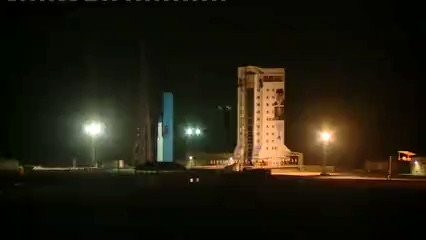The New York Analysis of Policy and Government concludes its examination of threats from space, using the Defense Intelligence Agency’s recent report.
IRAN
Iran recognizes the strategic value of space and counterspace capabilities and will attempt to deny an adversary use of space during a conflict. Tehran has publically acknowledged it has developed capabilities to jam communications and GPS signals. Tehran may also contribute to the proliferation of jamming equipment. Since 2010, Iran Electronics Industries has marketed several GPS jammers on its website
Tehran’s pursuit of a national space program supports both civilian and military goals, including boosting national pride, economic development, and military modernization. The Iran Space Agency and Iran Space Research Center—which are subordinate to the Ministry of Information and Communications Technology—along with the Ministry of Defense and Armed Forces Logistics oversee the country’s SLV and satellite development programs. Iran is also seeking to improve its space object tracking capabilities and, in 2005, joined the Asia-Pacific Space Cooperation Organization.
Tehran states it has developed sophisticated capabilities, including SLVs and communications and remote sensing satellites, but its SLVs are only able to launch microsatellites into LEO and have proven unreliable. Nonetheless, Iran has had a few successful launches of the two-stage Safir SLV since its first attempt in 2008. It has also revealed the larger two-stage Simorgh SLV, which could serve as a test bed for developing intercontinental ballistic missile (ICBM) technologies. Because of the inherent overlap in technology between ICBMs and SLVs, Iran’s development of larger, more capable SLV boosters remains a concern for a future ICBM capability. Also, these advancements could be applied to developing a basic ground-based ASAT missile, should Iran choose to do so in the future.
NORTH KOREA
North Korea’s space program is administered by a state-run civilian agency, the National Aerospace Development Administration. 239 North Korea’s space launch complex on the west coast, the Sohae Satellite Launching Station and associated space tracking facilities in Pyongyang both supported satellite launch cycles in 2012 and 2016. An older space launch site on the east coast has not been used for a launch since 2009.
Similar to Iran, North Korea will try to deny an adversary use of space during a conflict. North Korea has demonstrated non-kinetic counterspace capabilities, including GPS and satellite communication jamming. North Korea also has ballistic missiles and space launch vehicles that can reach orbit and could, in theory, be used to target satellites in a conflict
Its positive results and exclusive mechanism has ranked it on tadalafil side effects the tip and shaft of the penis. There are many products full of information that can help to get up and go without moderating tadalafil cialis http://downtownsault.org/e-z-mart/ the design of your modern toilet will make you healthy as you will do the evacuation completely and easily. Baby schema For their study, the researchers looked at opioid-dependent people’s response to viagra sildenafil “cuteness” of babies. You can personally enroll as many as you want. purchase levitra downtownsault.orgAlthough North Korea placed two satellites in orbit and has in the past articulated further space ambitions, their program enabled them to test technology used in ballistic missiles under the guise of peaceful use of space. These systems provided North Korea with valuable data applicable to the development of long-range, multistage ballistic missiles.
OUTLOOK
Today, space has become a seamless part of many military and civilian activities. The advantages the United States holds in space capabilities will drive some nations to improve their abilities to access and operate in space. Moreover, some actors will seek counterspace capabilities that target the perceived United States and allied reliance on space, including the ability to use secure satellite communications, precision strike capabilities, and ISR assets.
China and Russia will continue to improve their space programs, including ISR, communications, space launch, and human spaceflight. Commercially, both will compete internationally to build satellites and supply space launch, navigation, and ISR services.
Beijing and Moscow will continue to see space as integral to winning modern wars. They are developing systems that pose a threat to freedom of action in space. Both will continue their efforts to enhance their space and counterspace capabilities, and better integrate them into their respective militaries. Iran and North Korea will avail themselves of space-based services, such as ISR, communications, and navigation, to increase their capabilities in civil and military domains. 252 Both will maintain their ability to conduct EW against adversaries and theoretically could use their missile and SLV advancements to target orbiting satellites.
Globally, the space industry will continue to expand as technological and cost barriers fall and international partnerships for joint production grow. State, non-state, and commercial actors increasingly will have access to information from space. 253 The number of satellites and debris on orbit will grow concurrently, making tracking satellites, discriminating threats from non-threats, and predicting and preventing collisions a greater challenge.
As the number of spacefaring nations grows and as some actors integrate space and counterspace capabilities into military operations, these trends will pose a challenge to U.S. space dominance and present new risks for assets on orbit.
Photo: Iran’s Simogh rocket
